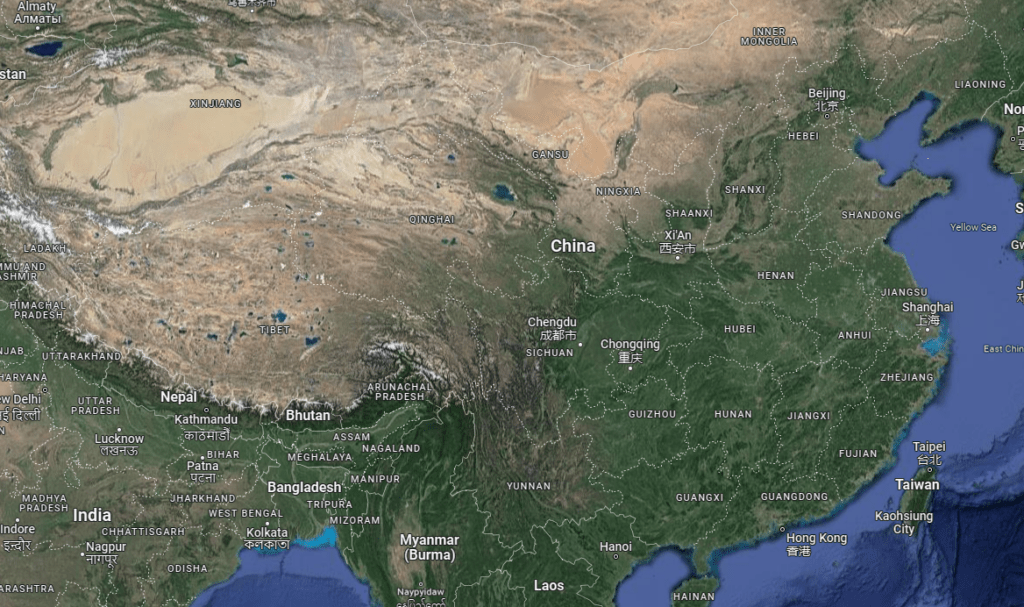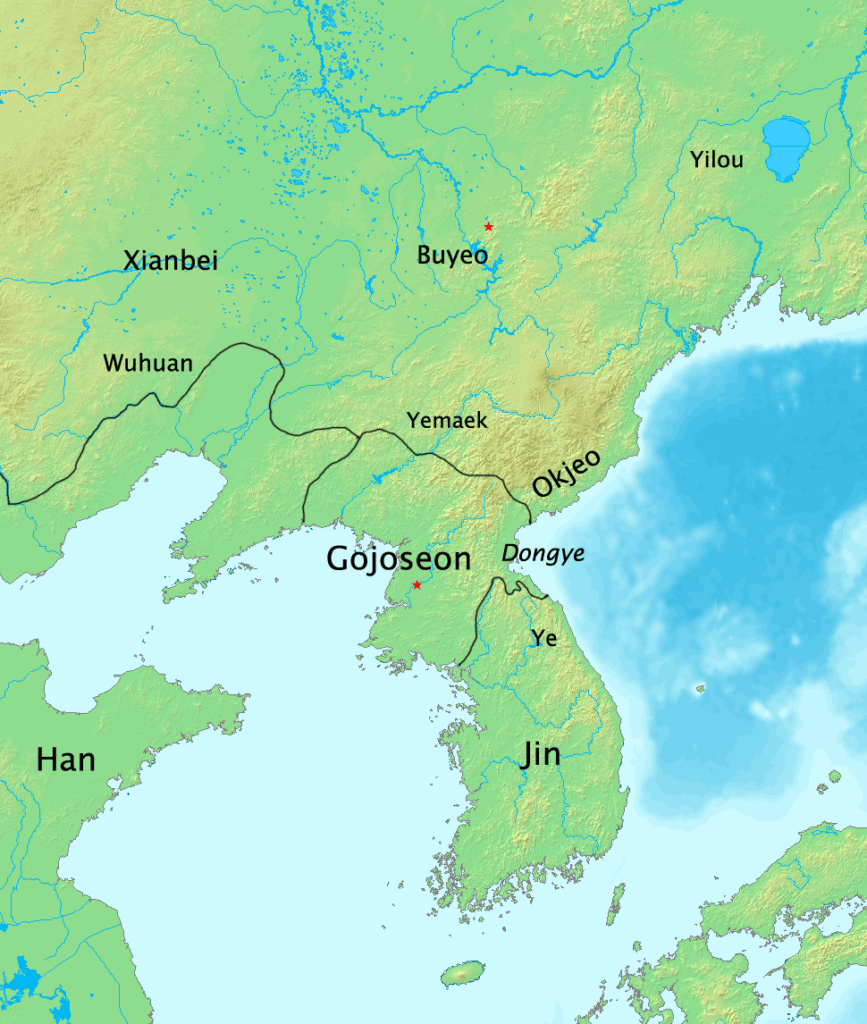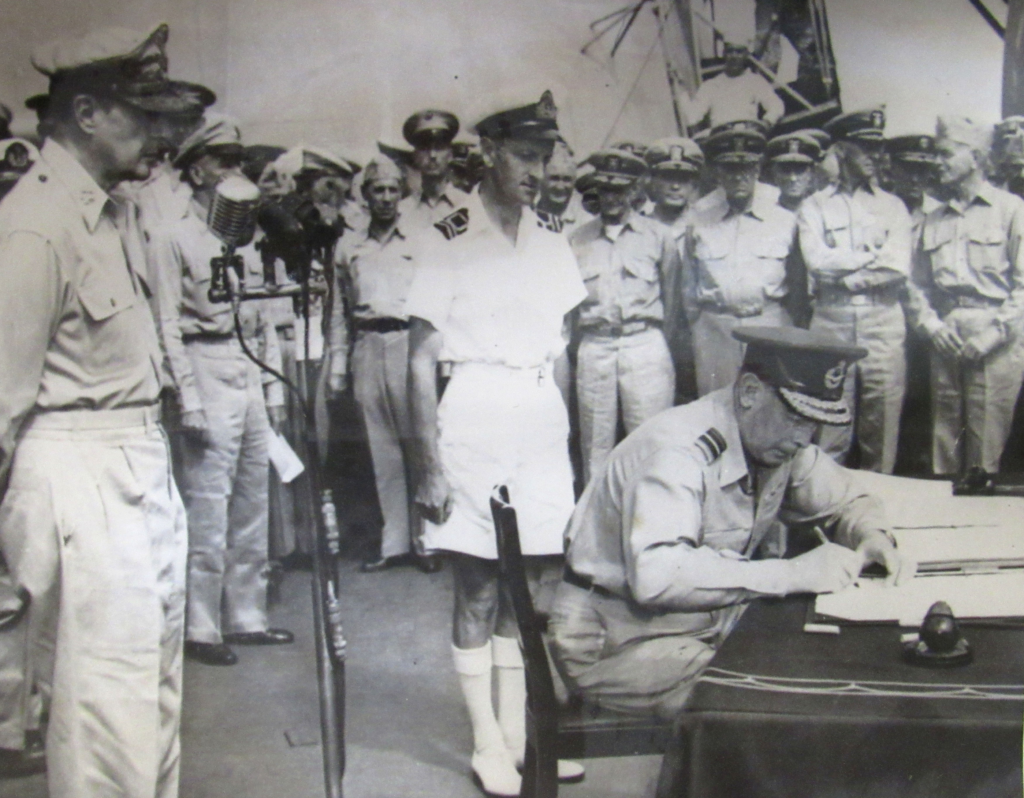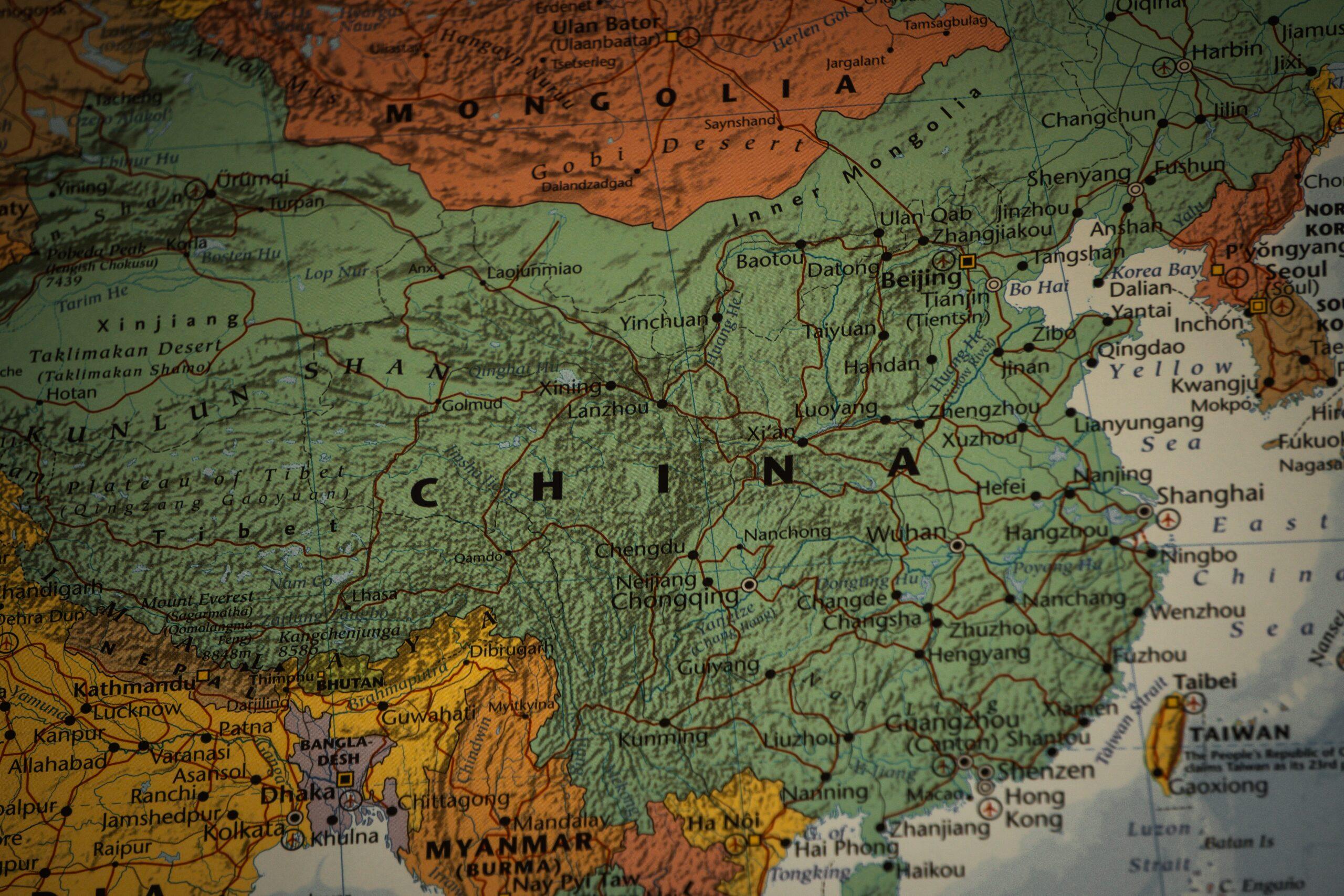Of all the conflicts that take place globally, it cannot be avoided to mention the situation around People’s Republic of China or Mainland China and the Republic of China or Taiwan. Especially recently now that the People’s Republic is making increasing efforts entering the territories of Taiwan, further triggered by the visit of US Speaker Nancy Pelosi, showing power and strength with missiles hitting close to the island’s coast. However, in this article we will not go into too much detail about the contemporary political conflict, and more in debt about how the situation had begun. It is also prioritised that every effort is made to provide unbiased information. Articles from the People’s Republic of China will be used, as well as articles from the Republic of China and lastly from outside of both places.
Geographical Context
Before we go into explaining the past of the Chinese – Taiwanese conflict, there is some geographical context that needs to be explained. The nations take place in the East of Asia. Both are positioned in the North West of the Pacific Ocean, Taiwan is at the junction of the East and South China Seas and the Mainland of China is connected to Yellow Sea, East and South China Seas. The waters have been providing both nations with geoeconomic and geopolitical advantages throughout their existence.
China includes a territory of 9.6 million square kilometers, making it the third biggest country in the world. China also has the highest population globally with 1.402 billion inhabitants. To understand how China is such a giant I would refer you to my recent article about Kublai Khan, where it is briefly explained or the video published by Johnny Harris on YouTube. In China, Simplified Mandarin is the dominant language and it is therefore obligatory to speak and understand standard Mandarin.

Taiwan, on the other hand, is a small island of around 35,980 square kilometers and is densely populated with 23 million inhabitants. Mandarin is also the dominant language, with only minor differences in pronunciation and dialect. Taiwan though, still uses Traditional Chinese as its writing system.

However, between the mainland and Taiwan, there is the Taiwanese strait seperating both nations. The shallow strait stretches about 180km in width and 350km in length. Therefore Taiwan is 160 km off the coast of China. This differentiates Taiwan to other regions affected by the One China Policy. Because they are not directly connected, China will have to face a major challenge to claim power over this island, but more on the One China Policy later.
Before the conflict
To understand the roots of this conflict, one has to go back to the 19th century. In 1894 there was increasing tension between two newly modernised empires; the Empire of Japan and the Qing Dynasty. The tensions were around one territory; the Great Joseon.

The Great Joseon was a long living dynasty ruling over the Korean peninsula. Initially it was founded by Yi Seong-gye, later named Taejo of Joseon, who used to be a commander in the Goryeo Kingdom. Great Joseon was one of the most flourishing kingdoms in Korean history, providing modern day Koreans with developments in architecture, printing and the still widly used, Hangul, Korea’s alphabet.
The increasing tensions kept escalating. It was a struggle for who shall assist Korea with modernising and thus who shall dominate. The escalations later came to its highest point when the Tonghak Uprising happened on the 11th of January 1894. The Tonghaks therefore were not the reason, but it was certainly, the last straw that breaks the camel’s back. The Tonghaks were of Korean peasantry, they had rebelled due to the obligation of them having to work on the reservoirs in uncertain circumstances and being forced to move close to the constructions.
Qing Dynasty was asked for assistance which, according to Japan, was against the Convention of Tientsin. However, today’s historiography is rather biased, whether this actually went against what was said in Tientsin, is not yet clear. According to Chinese sources, Japan was informed that Chinese troops were being sent for assistance and that the subsequent war was unjust. For Chinese historians what actually sparked the war was a surprise attack of Japanese submarines. The Chinese navy then was unprepared, having developed less ships than the Japanese thus affecting the outcome of the war. But the Japanese are sure that the Japanese Empire reacted to a breach of the agreement.
Whatever the reason, the war was a bloody battle and certainly left a scar in East Asian history. The war was won by the Japanese Empire, the war ended with the Treaty of Shimonoseki or Treaty of Maguan. Japan claimed numerous territories and increased its sphere of influence drastically. Making it more powerful and dominating than it has ever been. Korea became an independant state hugely influenced by the Japanese.
Later, pushed by Count Munemitsu Mutsu, Qing Dynasty lost another few territories. It was not through violence, but a mere agreement for cease fire. Imperial Japan after the Meiji Restoration was by no means a force to be reckoned with. Qing Dynasty knew that, Japan became more imperialistic and had been pushing forward plans to spread. Munemitsu’s plan was to claim Bay of Liaotung, Penghu Islands and – Taiwan.

Soon after a long time of discussing, predominantly over the importance of Taiwan and the refusal of giving up the island, Taiwan was in hands of the Japanese. The Empire sent its forced to the island and used force on the inhabitants who opposed the annexation. These locals were the Formosa, who soon after annexation, were completely extinct. This is where Taiwan will be out of Chinese hands for a long time to come and form an identity of its own thus, in my opinin, the roots of contemporary conflict.
Tensions between the two countries have remained in status quo for years. But the further development of Japan did not stop there, the Showa period (1926-1989) made Japan a dominant power in Asia.
Years of peace came to an end on 18 September 1931 with the invasion of Manchuria. The Empire had increasing interest in this region and executed the Mukden or 9.18 Incident. A self-induced destruction by the Japanese of the railway line for a reason to start war with China. Japanese domincance grew even more with the control over the railways and increasing industrial zones. This caused many incidents to happen over time, which eventually led to the Marco Polo Bridge incident on the 7th of July 1937, the day that is arguably the first signs of World War 2 sparking. Both Chinese forces and Japanese forces had done increasing efforts to increase manpower.

This caused a brutal war between both powers again, favouring Imperial Japan, claiming numerous territories in the East of China; including Beijing, Shanghai and Nanjing in 1937 resulting in one of the most brutal war crimes in history.
The formally signed Japanese Instrument of Surrender came to be on the 2nd of September 1945 by Emperor Hirohito making a global ending to the Second World War. The annexed territories were reclaimed by the affected countries. This resulted in China reclaiming Taiwan.

Where it started
As seen before, China reclaimed Taiwan after the Second World War. However, how is it. that after decades of living under Japanese annexation, the island went back into the hands of the Chinese? The answer to that question will provide more of an answer to today’s conflict. It will not so much indicate which political position you would take, for or against either party, this is completely up to you. But it will give a better indication of why there is so much discussion about this island and why it is not unequivocal to say what is right and what is wrong. As mentioned in the short introduction, I try to limit my opinion and the opinions written in the literature used for this article as much as possible. A quick disclaimer though, you should always be critical of what is written, whether it is on my articles or elsewhere.
The answer lies in the Cairo declaration, December 1943. It was an agreement between China and the allied forces, United Kingdom and the United States. It was promised that after victory, Japan should go back to pre-1894 Japan. Hence all areas taken from China were ought to go back in their hands. The island of Taiwan was one of them. Only the annexation was never recognised by the allies.
Later KMT troops, the Kuomintang, were sent to the island, putting Chen Yi as head of administration. This was in unfavour of the locals. This new state monopolised sources of income like tea and tobacco, mine fields etc. that were created by the Japanese Imperialist during the times of annexation. Only to poorly manage these seised factories, causing not only a nationwide shortage, but pushed forward black market trading causing the inflation in the ROC. The group mostly affected by these uncertain times, were the locals. The ones who have lived on the island even during the Japanese annexation. Having lost their jobs due to immigrants from the mainland. More and more of the people are taking to the streets of Taipei to fight against this autocratic regime, and certainly, Chen Yi causing the February 28 massacre. There was systematic killing of the population, in the most gruesome ways.

However, a figure indispensable from this event was Chiang Kai-Shek, the President who led the ROC. He kicked Chen Yi out of his administration after the atrocities and emprisoned him at Keelung. However, he was certainly not innocent in the story. He was the person who gave Yi the leading role on the island and blessed him with manpower and equipment.
The republic was not only a problem for the island. I also want to emphasise that the mainland also had its difficulties with the nationalists of the republic. Mainly the communists, who were leading the cultural against the regime.
On the Mainland, in 1945, it was not only Chiang Kai-shek who actively sought to reclaim control in China. There was also Mao Zedong, leader of the CCP (Chinese Communist Party) with similar motives. The KMT and CCP had been competing for power in the mainland for longer though. This started in 1926, when warlords still ruled over northern territories. Both wanted to get rid of this ancient way of ruling, only both have a different idea why. The KMT wanted to increase central governing and sees these warlords as an issue that would make power less evident. The CCP on the other hand, was interested in ending the fengjian, Chinese feudalism in China that came to be since, according to Guo Moruo, the Zhou Dynasty.
Mao Zedong though, had the ability to unify the peasantry of China, which had been further stimulated by the war against japan. Millions of soldiers were on Mao’s side. It is therefore logical that Mao will lead the communist revolution to succes. The Chinese revolution will take place on October 1, 1949 which will escalate into civil war. In the end, the communists win and China becomes a communist country.
Except, even though Mao’s victory, the republic under Chiang Kai-shek seems to escape to the island on which it will continue to develop for decades up to today. This is how both areas will develop further and further from each other for a long time to come. As a result, it is not easy to take a position in the debate.
You can argue that Taiwan has formed its own identity by living outside the mainland for years and developing further towards a democratic country following the model of other developed countries. But you could also argue that in the 19th century, Taiwan was taken from China and that with the promise of the Cairo Declaration, Taiwan would have to come back into their hands. But which position you take is completely up to you. The answer is never straightforward and this discussion is as polarising as it gets.
The CCP today regularly pushes the One China policy as mentioned in the introduction. China should, according to this policy, only have one government ruling over the territories. Taiwan, like other territories, is thus seen as a province that has broken away in the past. China will then do its complete efforts to reclaim this island and overthrow the POC. And in my opinion, there will be a time that Taiwan will be invaded, China is expanding its military beyond what you can imagine. Several troops are also positioned near the island. The country is prepared for the inevitable. But when the situation will escalate to its climax is uncertain. What we can hope for is, despite the outcome, that there will be no casualties and that everything can happen with peace and diplomacy.

